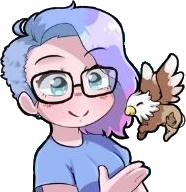 The second-most interesting thing about writing for video games is that odds are, the bulk of the writing that you’ll be doing will have very little to do with the “main” plot and its showier expressions. Yes, there is dialog to write and there are cut scenes to script and they are shiny and sexy and cool, but the thing is, a player’s only going to run across those lines and those scenes once as they advance through a game’s storyline. On the other hand, if they’re playing, say, a first person shooter, they’re going to encounter the so-called systemic dialog about shooting (and getting shot, and needing to reload, and needing to get the hell out of the way of an incoming grenade) rather more frequently than that. And, that in turn, means that you’re going to be spending a lot of time working on those lines, and generating a lot of them. You’re also going to be writing things like story documents, and character writeups, and team documents, and a dozen other things that aren’t the sexy bits with explosions that everyone thinks of when they think of game writing.
The second-most interesting thing about writing for video games is that odds are, the bulk of the writing that you’ll be doing will have very little to do with the “main” plot and its showier expressions. Yes, there is dialog to write and there are cut scenes to script and they are shiny and sexy and cool, but the thing is, a player’s only going to run across those lines and those scenes once as they advance through a game’s storyline. On the other hand, if they’re playing, say, a first person shooter, they’re going to encounter the so-called systemic dialog about shooting (and getting shot, and needing to reload, and needing to get the hell out of the way of an incoming grenade) rather more frequently than that. And, that in turn, means that you’re going to be spending a lot of time working on those lines, and generating a lot of them. You’re also going to be writing things like story documents, and character writeups, and team documents, and a dozen other things that aren’t the sexy bits with explosions that everyone thinks of when they think of game writing.
And that’s perfectly cool. Because those aspects of the gig require just as much craft and care as the more obvious ones, which means developing a whole new set of tools to make sure you get them right. Don’t believe me? Then go play a game where the systemic stuff didn’t get that tender loving care – where they didn’t produce enough variants so you hear the same lines coming from dozens of different enemies who probably shouldn’t be comparing notes with one another – and see if that starts getting annoying after a while. Better yet, find a game with one jarringly out of place systemic line and see if that doesn’t turn into the equivalent of nails on a chalkboard long before you’ve picked up all of the game’s achievements. (Trust me. I was kind of responsible for one of those.)
So, yes. There’s an awful lot of game writing that most people don’t really think about that’s necessary and intricate and hard work, and if you’re good at that you’re worth your weight in gold.
But that’s the second-most interesting thing. The first is that you’re not actually writing the story. Your protagonist is not the hero. And your version of how things are going to happen is going to crumble in the face of an irresistible force: the player.
Because in games, the player is the hero. It’s the player who makes every decision so that their particular journey through the game is unique to them. Even the little stuff – deciding when to reload or change garments or duck instead of sprinting – personalizes their experience in a way that defies the cast-in-stone progression of other narrative forms. Which means that as a game writer, you’re writing the stuff that the player turns into the story through their interaction with it. The wittiest dialog, the coolest cut scene, the most interesting plot twist – they all sit there, inert, until activated by the player’s interaction with them. Then and only then do they become part of that player’s story, a story that inevitably starts with the word “I” (and not “Lara Croft or “Sam Fisher” or “Pac-Man”) when it is told to friends later.
That’s a hard thing to grasp sometimes. The urge is to want to tell our stories, to tweak the timing and hone the experience so that everything’s sparkling and perfect and immutable. But that doesn’t work in a space where players are the reason the whole shebang exists, and while you may want your narrative elements to draw them forward, forcing them to do the same is liable to get some pushback.
And make no mistake, game players do love their story. Look at the uproar over the ending of Mass Effect 3 – that was about player investment in game characters and story,. Look at the love for games as wildly diverse as Gone Home and The Last of Us and Kentucky Route Zero and the utterly insane but brilliant DLC Gearbox put out for Borderlands 2. The writing in all of these games is something players want to experience; they just want to experience it in a way that makes it theirs, something they did instead of something they read or heard or watched.
And this is so much of what makes writing for games fun. It’s seeing that moment when the player inhabits your words, picks them up and makes them their own, that makes the crunches and the meetings and the endless, endless iterations of “Arrgh, he shot me” more than worthwhile.
Which reminds me, there’s a third really interesting thing about writing for video games. But that’s another story entirely.
Bio: Writer, game designer and cad, Richard Dansky was named one of the Top 20 videogame writers in the world in 2009 by Gamasutra. His work includes bestselling games such as Tom Clancy’s Splinter Cell: Conviction, Far Cry, Tom Clancy’s Rainbow Six 3, Outland, and Tom Clancy’s Splinter Cell: Blacklist. He has published six novels and the short fiction collection Snowbird Gothic, and is currently hard at work as the developer for the 20th Anniversary Edition of classic tabletop RPG Wraith: The Oblivion. Richard lives in North Carolina with his wife, statistician and blogger Melinda Thielbar, and their amorphously large collections of books and single malt whiskys.
Enjoy this writing advice and want more content like it? Check out the classes Cat gives via the Rambo Academy for Wayward Writers, which offers both on-demand and live online writing classes for fantasy and science fiction writers from Cat and other authors, including Ann Leckie, Seanan McGuire, Fran Wilde and other talents! All classes include three free slots.
If you’re an author or other fantasy and science fiction creative, and want to do a guest blog post, please check out the guest blog post guidelines.









15 Responses
RT @Catrambo: Richard Dansky tells you the Interesting Thing About Writing For Video Games”¦: http://t.co/nQVoezmYJB
@Catrambo That was great.
Danielle Myers Gembala liked this on Facebook.
Sally Wiener Grotta liked this on Facebook.
S. Hutson Blount liked this on Facebook.
Sandra Odell liked this on Facebook.
So here’s a thing I wrote about writing and games and whatnot:
http://t.co/wNiWJqWT5L
Holly Roberds liked this on Facebook.
RT @RDansky: So here’s a thing I wrote about writing and games and whatnot:
http://t.co/wNiWJqWT5L
Greg Reid liked this on Facebook.
Gray Rinehart liked this on Facebook.
ICYMI, me nattering about game writing at @Catrambo’s blog – http://t.co/wNiWJqWT5L
Never Forget, me nattering about game writing at .Catrambo’s blog – http://t.co/32Zqp4Be9w
RT @RDansky: ICYMI, me nattering about game writing at @Catrambo’s blog – http://t.co/wNiWJqWT5L
RT @RDansky: ICYMI, me nattering about game writing at @Catrambo’s blog – http://t.co/wNiWJqWT5L